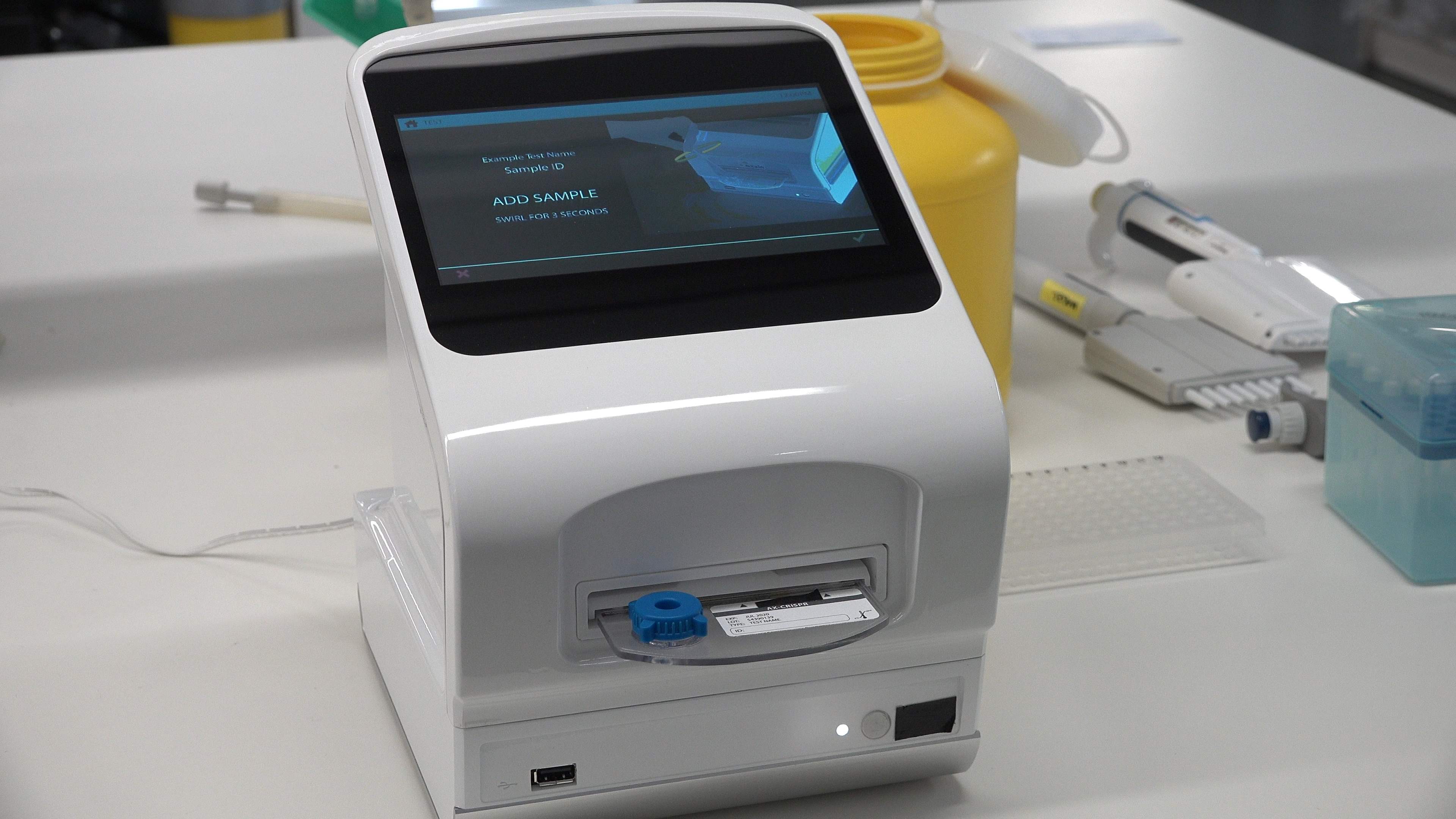Media release
From: Walter and Eliza Hall Institute of Medical Research (WEHI)Called c-FIND, the test has the potential to rapidly and accurately detect multiple viral, bacterial or fungal infections within minutes – much faster than existing tests which can take days, or even weeks, to return a result.
The test is now being developed into a portable, ‘point-of-care’ diagnostic device. Equipping clinicians with this device would enable them to diagnose infections without delay, and immediately provide the best care to high-risk patients, such as people with cancer.
The c-FIND program of research is being led by the Walter and Eliza Hall Institute of Medical Research, in collaboration with Melbourne Health, Murdoch Children’s Research Institute, Peter MacCallum Cancer Centre, The Royal Children’s Hospital Melbourne, University of Melbourne, as well as industry partner and local biomedical technology company, Axxin Pty Ltd.
Transforming clinical care
Development is now underway to translate the c-FIND test into a portable, point-of-care device.
Following a successful bid for $1 million in funding from the Australian Government Medical Research Future Fund Frontiers program, the c-FIND research team is applying for funding that will include support for 13 clinical trials to rigorously assess implementation of the c-FIND diagnostic device in Australian healthcare settings with urgent, unmet diagnostic needs.
The trials aim to help advance Australia’s ability to rapidly and accurately diagnose: COVID-19 and other existing and emerging biosecurity threats; high-risk cancer patients with asymptomatic or hard-to-detect infections; infections in infants and children; and latent tuberculosis.
Institute infectious disease physician and researcher Professor Marc Pellegrini said the c-FIND device could profoundly change how infections were detected and treated in a range of settings including hospitals, GP clinics, airports and ports of entry, and regional or remote centres.
“The introduction of a fast, reliable, user-friendly, point-of-care device to diagnose infections and infectious diseases on the spot, and even determine antimicrobial resistance, would be a game-changer for improving targeted patient care,” he said.
“c-FIND could prevent patients with hard-to-diagnose or hard-to-detect infections from waiting days, or weeks, for test results to come back whilst having expensive drug treatments, or unnecessary and invasive procedures.”
Pandemic preparedness
Professor Pellegrini said the global COVID-19 pandemic had highlighted weaknesses in Australia’s ability to quickly detect, diagnose and respond to infectious disease threats.
“The current way that we test for COVID-19 is labour intensive, requiring highly trained staff, a central laboratory and expensive equipment to process samples. It can take days for patients to receive results, increasing the likelihood of disease transmission within the community,” Professor Pellegrini said.
“If a system such as c-FIND was available in the market, it could prevent disease spread and save lives by identifying infected people when they are tested so they can be isolated and treated without delay. It is widely accepted that pandemics will become more frequent in the future. A diagnostic device such as c-FIND would advance our capability to successfully respond to these emerging threats.”
Peter Mac infectious disease physician and associate director of health services research Professor Karin Thursky said the pandemic had knock-on effects for other parts of the healthcare system, such as cancer care, and significant impacts on vulnerable patients.
“With COVID-19 in the community, cancer patients are at significant risk and hospitals are having to put measures in place to protect them. This has meant that any cancer patient who presents with fever or respiratory symptoms is placed in strict isolation, and treated as COVID-19-positive until they return two negative results. These measures are distressing for patients and their loved ones, cause delays to cancer treatment being able to progress and place an additional burden on the healthcare system,” Professor Thursky said.
How does c-FIND work?
Institute CRISPR expert Associate Professor Marco Herold and his team have successfully adapted CRISPR for the development of the c-FIND test. The use of CRISPR technology in the diagnostics space has unleashed exciting potential to accurately detect genetic traces of disease-causing microbes within minutes.
“Once fully developed, the c-FIND diagnostic would involve taking a blood, mucus or saliva sample from a patient and – with minimal preparation – applying this to a small cartridge. This cartridge would then be run through the device to rapidly screen for as many as eight different viral, fungal or bacterial organisms at a time,” Associate Professor Herold said.
“c-FIND is fast as well as highly sensitive and specific. This means the technology has the ability to accurately identify if a person has certain infections, as well as rule out the infections a person does not have – it is unique for a test to excel in both these capabilities. Additionally, the system can be easily adapted to test for new and emerging infections,” he said.
Australian-led innovation
Institute director Professor Doug Hilton said c-FIND was a terrific example of Australian-led innovation and collaboration.
“c-FIND is the result of key collaborations between medical researchers, clinicians, hospitals and industry, leveraging their networks to produce a commercially-viable and competitive product that could deliver significant health and economic benefits to Australia and globally. It underscores Australian ingenuity and our self-sufficiency on the global stage,” Professor Hilton said.
“It is an incredibly exciting and potentially game-changing technology and I hope that further support can be secured so the team of talented researchers and clinicians can take this program of work to the next level and rigorously test the ability of c-FIND to improve Australian healthcare.”
About the Institute’s COVID-19 response
The Walter and Eliza Hall Institute is leading a number of major research responses to COVID-19 in collaboration with research partners in universities, hospitals and the private sector. Our researchers are working towards better approaches to diagnose, treat and prevent the spread of coronaviruses, both to address the current COVID-19 global outbreak, as well as in preparedness for future coronaviral disease outbreaks.



